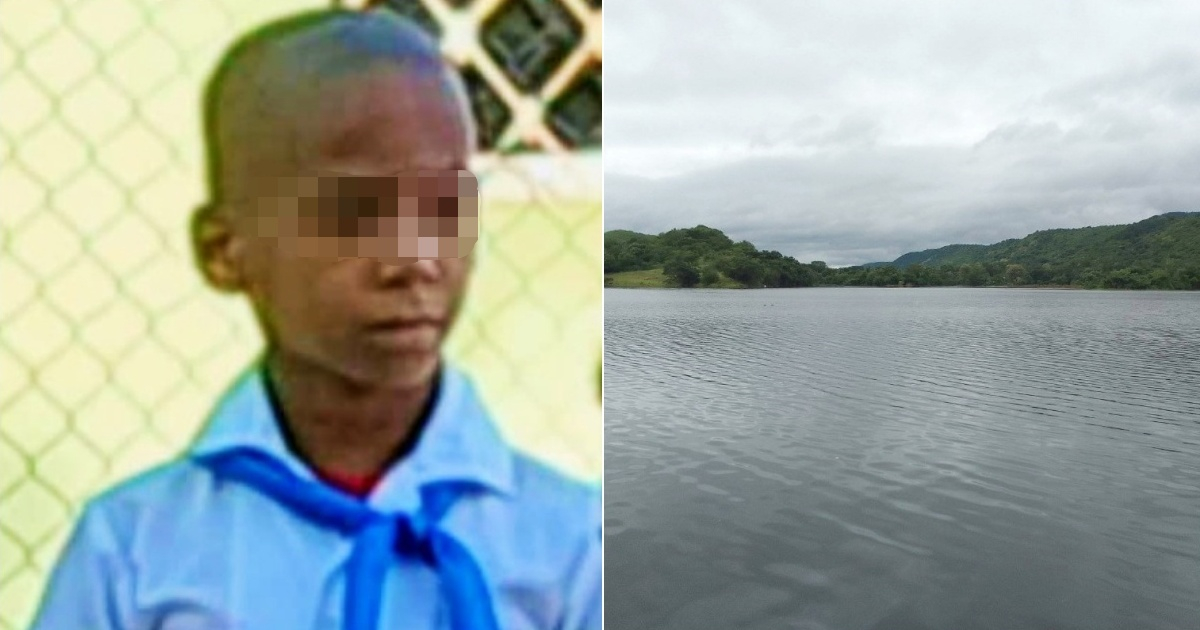On Monday, a nine-year-old boy tragically drowned in the Chalons Reservoir, the oldest dam in Cuba, located in Santiago de Cuba. The young victim has been identified as Danger Curo Padilla, a resident of Boniato and student at Antonio Robert Ducás Primary School.
According to the boy's family, who spoke with journalist Yosmany Mayeta, Danger's mother had allowed him to visit the reservoir with his older brother. "They went to the reservoir and were playing in the water. Suddenly, the boy felt unwell and told his older brother. The brother pulled him out and sat him on the wall before getting back into the water to continue playing. At one point, he looked back and his younger brother was gone," a close relative of the deceased child told the journalist.
The older brother, unable to find Danger, ran back home thinking his brother had returned on his own. After a frantic and unsuccessful search among nearby relatives, the family decided to return to the reservoir, where a cousin ultimately discovered the boy's lifeless body near the shore where he had been swimming.
Danger lived with his mother, Katiuska Padilla, his stepfather, Leonel Aguilar, and his older brother at the José Martí Farm in Boniato. The pain among the family members is immense. "This is very hard. The older brother is devastated, and the mother and stepfather are in terrible shape. Leonel has raised Danger since he was very little," a family source shared.
Despite their modest means, neighbors say Danger was well-mannered and obedient. He was a beloved figure in his community, known for his good behavior and respectfulness. Despite his family's economic hardships, neighbors always described him as a polite and respectful child.
The boy's classmates were called to the wake, which is being held at the family's home. The burial is scheduled for 4:00 PM on Tuesday at the "El Deja'o" cemetery in Boniato. "I urge all families who frequently visit this area of the reservoir, which is not designated for recreational swimming, to exercise caution. Every year, children and adults perish in this zone. It's heartbreaking to see so many innocent lives extinguished while seeking a moment of leisure," wrote Mayeta Labrada.
The journalist urged residents to take precautionary measures when visiting the reservoir and to ensure that minors are always accompanied by adults or their parents. Unfortunately, several drowning incidents have occurred in Santiago de Cuba in recent months.
Just days before this incident, two other young people drowned at Sardinero Beach, also in Santiago de Cuba, when a group of nine people, including three minors, were swimming in the hazardous coastal area where swimming is officially prohibited.
In that case, the first victim was identified as Rachel Mora Torres, a 20-year-old resident of Mangos de Baraguá, according to Aris Arias Batalla, the provincial head of Aquatic Safety and Rescue Operations for the Red Cross. The other victim was Yasel Alberto Bicet, also 20, and a resident of the Abel Santamaría district, who remained missing for several hours before his body was found.
Tragic Drowning Incidents in Santiago de Cuba
Here, we address some common questions regarding the recent drowning incidents in Santiago de Cuba, aiming to provide clarity and safety information for residents and visitors.
What safety precautions should be taken when visiting reservoirs in Santiago de Cuba?
It is crucial to ensure that minors are always supervised by adults. Avoid swimming in areas that are not designated for recreational purposes, and heed all safety warnings and signs.
Why is swimming at Sardinero Beach prohibited?
Swimming at Sardinero Beach is prohibited due to hazardous coastal conditions that increase the risk of drowning. Local authorities have designated this area as unsafe for swimming to prevent accidents.
How can the community support the grieving families?
The community can offer emotional support, attend memorial services, and help raise awareness about water safety to prevent future tragedies.
